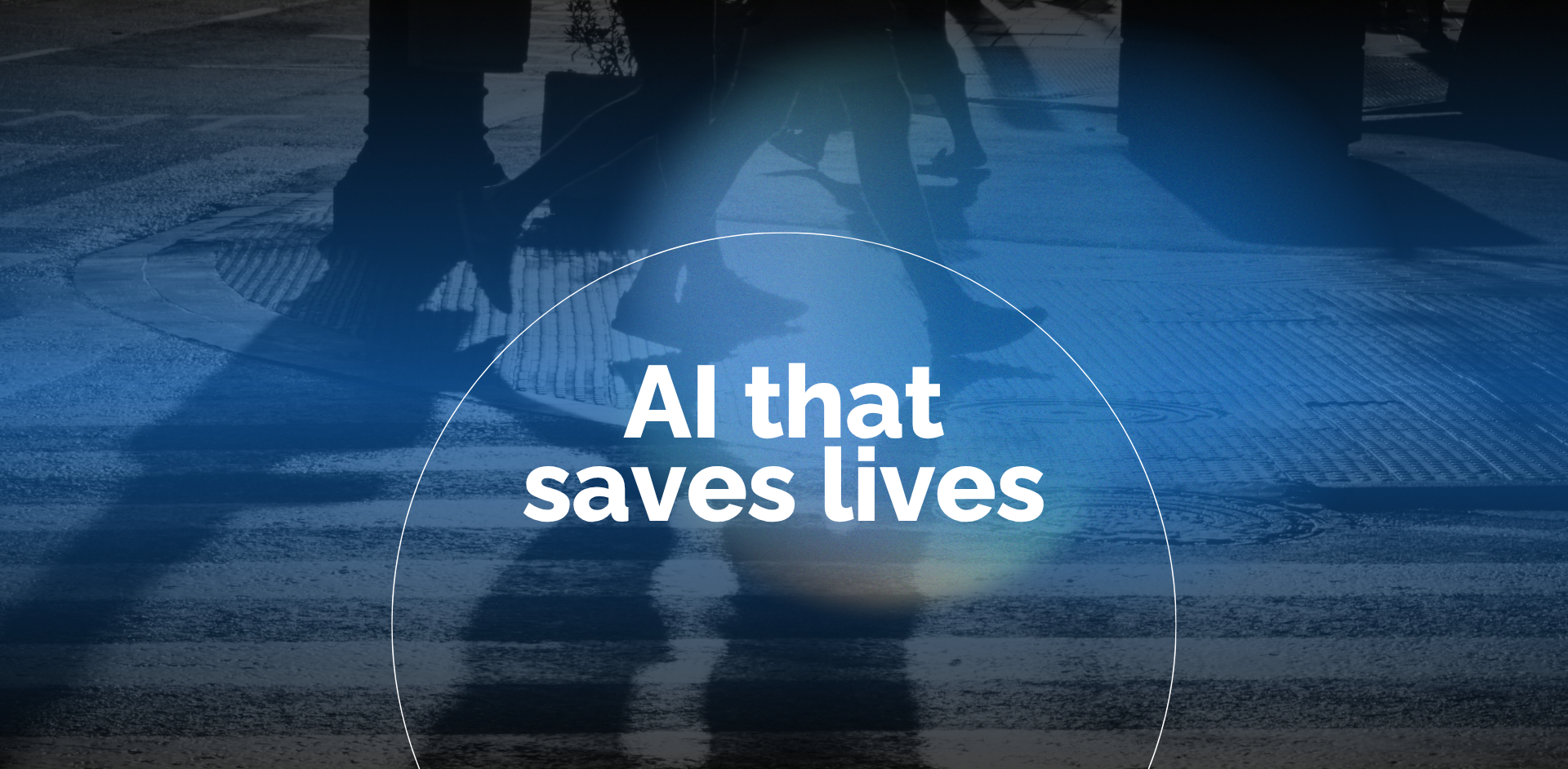A new generation of AI-enabled tech is helping cities reduce pedestrian accidents and fatalities
New York City has achieved some remarkable results with their “Vision Zero” programs. Based on the original idea from Sweden, these programs, which are dedicated to reducing traffic injuries and fatalities, involve dozens of initiatives across multiple city departments from roadway engineering to law enforcement strategies.
For example, according to the “Vision Zero Year Seven Report,” the five-year average for pedestrian deaths in New York City has decreased 37% from before these programs began. Vision Zero initiatives have now spread to many other municipalities around the world to continue reducing roadway fatalities and serious injuries.
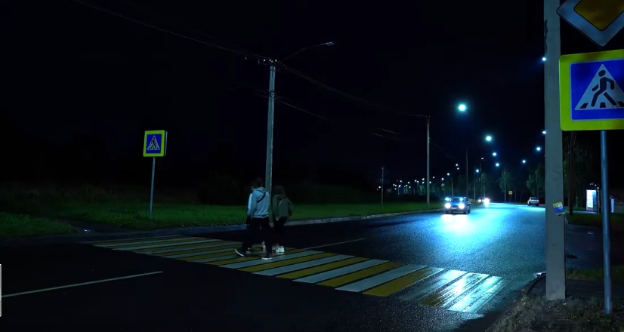
As great as these results are, there is further to go. Certainly, effort should continue to go into vehicle safety, both in the vehicle systems themselves and in roadway design, improved signage, and similar actions. But we think vehicle drivers are already relatively well protected by seat belts, airbags, automatic braking systems, and much more.
In contrast, pedestrians are too often ‘on their own’ for their safety and could gain great benefits from evolving technologies. Moreover, pedestrian injuries and fatalities are particularly wrenching because they have little to no protection compared with those in vehicles. Instead, they depend upon vehicle drivers to see pedestrians, recognize that they could be in potentially dangerous positions, and take appropriate action by either slowing, stopping, or changing direction. We think it’s high time to make it safer for pedestrians, starting with unregulated crossings.
Applying Advanced Video Analytics
Smart city technologies and video analytics, in particular, have rapidly improved in recent years. When leading-edge analytics are added to city monitoring systems, they can detect safety and security issues, triggering an appropriate response faster and more accurately than ever before.
Applying advanced video analytics can often be accomplished using existing video systems, so that improved capabilities and effectiveness can be achieved without the need for replacing existing infrastructure. This makes implementation less disruptive, much faster and more cost effective. Adding analytics in this way supports many useful city management functions, from parking management to traffic safety officer deployment planning, incident response, and much more.
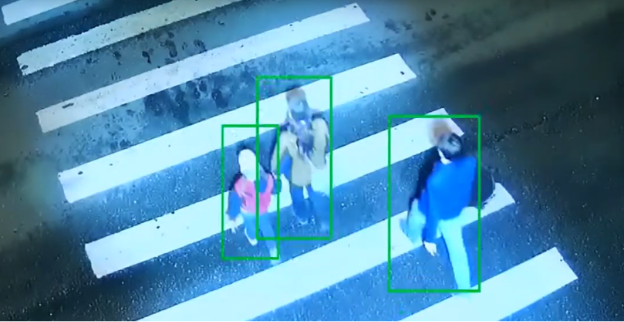
In several areas, ISS has gone beyond monitoring to apply powerful video analytics to solve specific real-world problems, including pedestrian crossing safety, more directly.
These ‘hybrid products’, which cannot be offered by analytics-only companies, combine hardware with video analytics software powered by Intel technology to provide powerful intelligent transportation solutions for cities and municipalities of all sizes.
Examples of this include the enforcement of traffic regulations, identifying and tracking specific vehicles of interest, and automating under-vehicle inspections for contraband or dangerous items.
Protecting Pedestrian Crossings
There is one solution that is particularly suited to address the pedestrian crossing situation directly, and it is a great example of how general AI-powered analytics can be implemented with a minimal set of application-specific hardware to address a particular safety challenge.
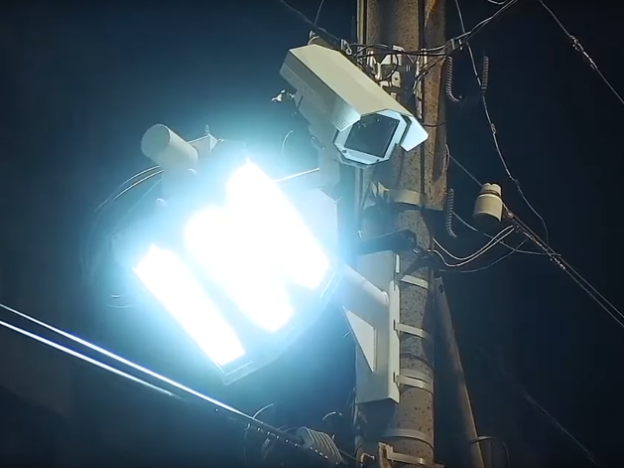
SecurOS® Soffit is an intelligent system that escorts pedestrians using AI-driven dynamic illumination to prevent traffic accidents involving people at unregulated crosswalks. It is a hybrid product that combines purpose-built hardware with AI-driven analytics software to provide functionality that is not available from either an analytics company or a video or lighting provider.
The hardware includes a video camera and an aimable lighting array that only illuminates the pedestrians and does not blind approaching drivers. The analytics functionality uses the video stream to identify pedestrians and track their position in real time and then directs the lighting array to illuminate the individuals – escorting them as they cross the street.
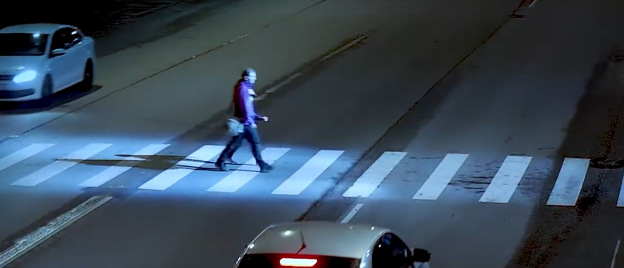
This intelligent lighting system, and the dynamic illumination it provides, has been proven to draw drivers’ attention to pedestrians, speeding their visual motor response and increasing their ability to brake in time to avoid accidents. To improve safety in the real world requires any proposed solution to function reliably in an unpredictable set of conditions, while delivering real-time, real-world actions to address these vexing challenges.
Delivering Real-World Analytics Benefits
Unique, purpose-built solutions, such as Soffit described above, are able to incorporate necessary technologies and balance the engineering tradeoffs to deliver significant increases in road safety without the need to purchase unnecessary components. The use of AI algorithms and Intel technologies also provides benefits by accommodating a wide range of conditions and situations while maintaining high performance.
We can envision applying AI-powered solutions to other traffic and pedestrian safety challenges. In each case, we believe that the system can be integrated with other road-related analytics systems along with metrics and performance data, which can be collected and transmitted to third-party security systems, thereby forming a complete solution. And we also support industry efforts to develop and implement more beneficial applications of AI technology to delivers tangible and significant increases in road safety, reducing the overall number of pedestrian accidents and fatalities.


